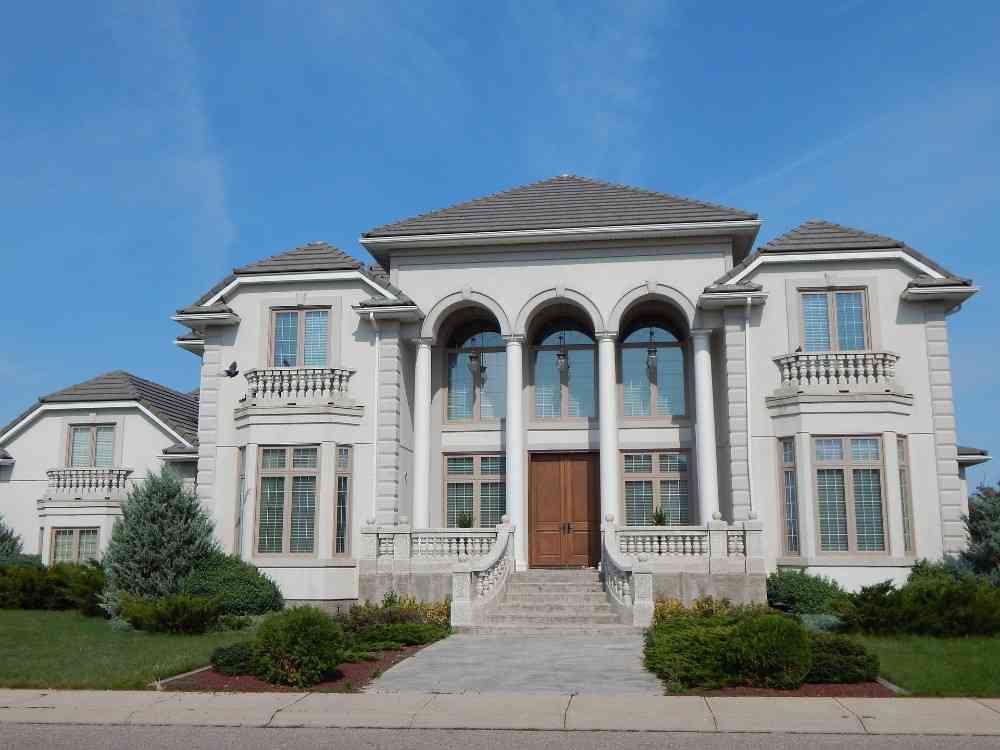Stucco is porous and retains moisture. Hence, it becomes a breeding ground for mold. Stucco siding is a material that is made from cement, water, and lime. It is applied in three coats on top of a lath base. It is used to provide a durable as well as a seamless exterior. If the stucco siding is damaged or improperly installed, there will be excess moistures as well as water retention. This will cause mold to be a significant concern around your houses. Mold is not just a color stain, it can also cause significant health risks to your loved ones due to the spore produced. If this happens in your property, you need to identify the water source and have it repaired. The affected stucco can be repaired or replaced altogether.
Pros & Cons of Stucco Siding
Stucco siding is associated with some advantages which include its natural resistance to fire as well as its low maintenance. It is also an incredible insulator and helps to maintain a constant temperature. It is entirely energy efficient, and this is part of the reason why it is quite popular especially in luxury homes in our Kansas City metro area.
However, stucco siding comes with some disadvantages too. This is especially if the stucco has been poorly installed or even if it has been poorly maintained. In most cases, stucco can cause several problems which include mold, water damage, staining as well as cracking.
Stucco Can’t Handle Water
Due to the porous nature of stucco, it cannot handle saturation or any form of excessive moisture. Including heavy direct rain, flooding, dirt or any form of direct contact with large amounts of water. The porous nature of stucco will draw in water into the exterior wall cavities. Water in the wall cavity that fails to dry. Basically, the exterior walls begin to rot from the inside out. These wall cavities are hidden from air and sunlight. With an abundance of porous materials like plywood, insulation, and timber. Which creates the perfect environment for mold to thrive and grow rampant. Growing unseen and eventually affecting the indoor air quality of your home or business. Nearly every house built in the last 20 years needs stucco remediation of some kind.
The Stucco Creates a Mold Problem
Stucco mold damage occurs often. Numerous property owners claim a major construction problem as a result of faulty stucco. Stucco mold damage occurs due to trapped moisture from faulty stucco. Exterior siding damage is a very common problem we find. Most building inspectors are good at finding the obvious like wood rot and obvious damage. However, we see lots of water and mold damage missed by inspectors.
Peeling back the stucco exposes rotting wood and mold. Trapped water behind the stucco causes the building to literally rot away. Leaving the property owners with huge repair costs. Properties with stucco problems are costly to repair. Many times the stucco, windows, and sheathing all have to be replaced. Also, high-end contractors hurry and utilize cost-cutting methods just like lower-end contractors. So, just because you may own a luxury property that does not mean your property is immune. ALL stucco absorbs moisture and therefore has the potential for significant damage despite the property’s value, status or location.
How to Prevent Damage to Your Stucco Siding’
If your home or property has stucco siding you have two basic choices. First of all, keep a close eye and maintain it well. The other is to replace the siding. The latter being a large financial expense will mean the majority of property owners will opt for the maintenance route. Here are the top items we recommend to maintain your stucco siding:
- Install large gutters and downspouts to handle large volumes of water. Also, ensure that none of them spill over or leak in the seams. This will saturate your siding and create an opportunity for water and mold damage.
- Have your windows flashing and caulk inspected and/or repaired every 3-5 years. Close attention needs to be given to stucco around windows.
- Keep on top of roof maintenance and prevent roof leaks
- Ensure that the soil around home or building is a negative grade and slopping away from the foundation wall. This also helps prevent basement water and mold damage.
- Remove all trees in close proximity to stucco exterior. As this prevents the sun and airflow from reaching the siding
- Make sure the attic and crawl spaces have proper ventilation
We recommend you look for signs of moisture, especially around windows. Signs include: warping wood, peeling paint, discoloration, condensation or mold are all signs of a potentially bigger problem.
Why is Stucco So Popular
There is a reason why stucco is so popular. Primarily because of its aesthetic values. While the exterior may look so appealing and perfectly fine. Hidden beneath the surface are thousands of potential expenses of structural cost issues. However, the problem is that the inspectors and builders fail to address the maintenance concerns with stucco. Since stucco has been used for many decades but the installation methods seem to vary, and that is based on the builder’s techniques. Some say it doesn’t matter how skilled the plasterer is, the rain will still get behind the stucco and with time causing damage. Mold damage may be a more significant problem than anyone knows because it is close to being undetectable until a significant amount of mold forms.
Stucco Inspections
Stucco inspection is costly and requires two phases. The first test is to identify if there is a problem. Or if there could be problems in the future. The second phase of testing, destructive testing, requires peeling back layers of the stucco. Because this determines the cause of damage and the extent of that damage. Research indicates that there is a significant number of properties in the Kansas City metro area that needs stucco remediation.
